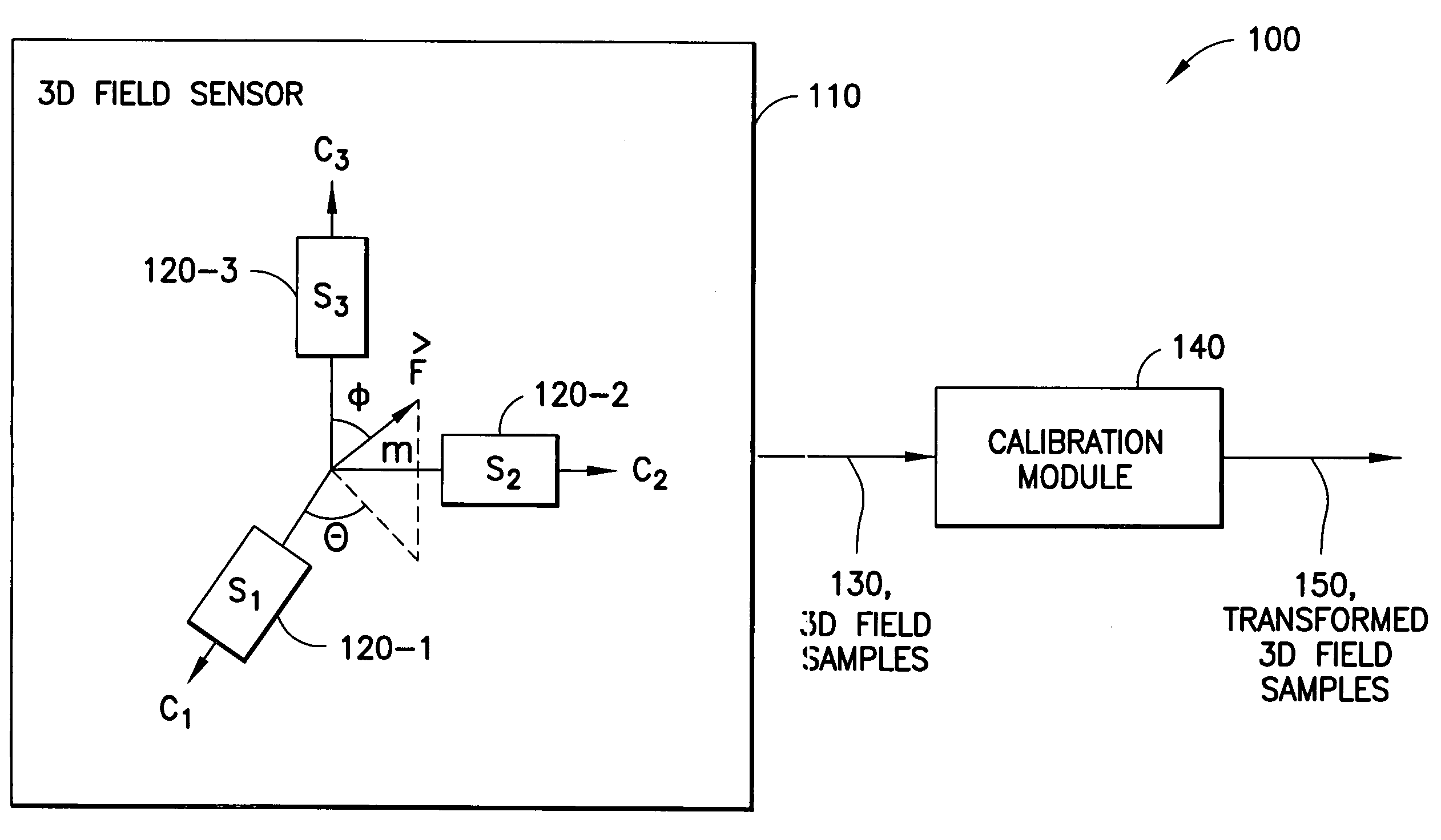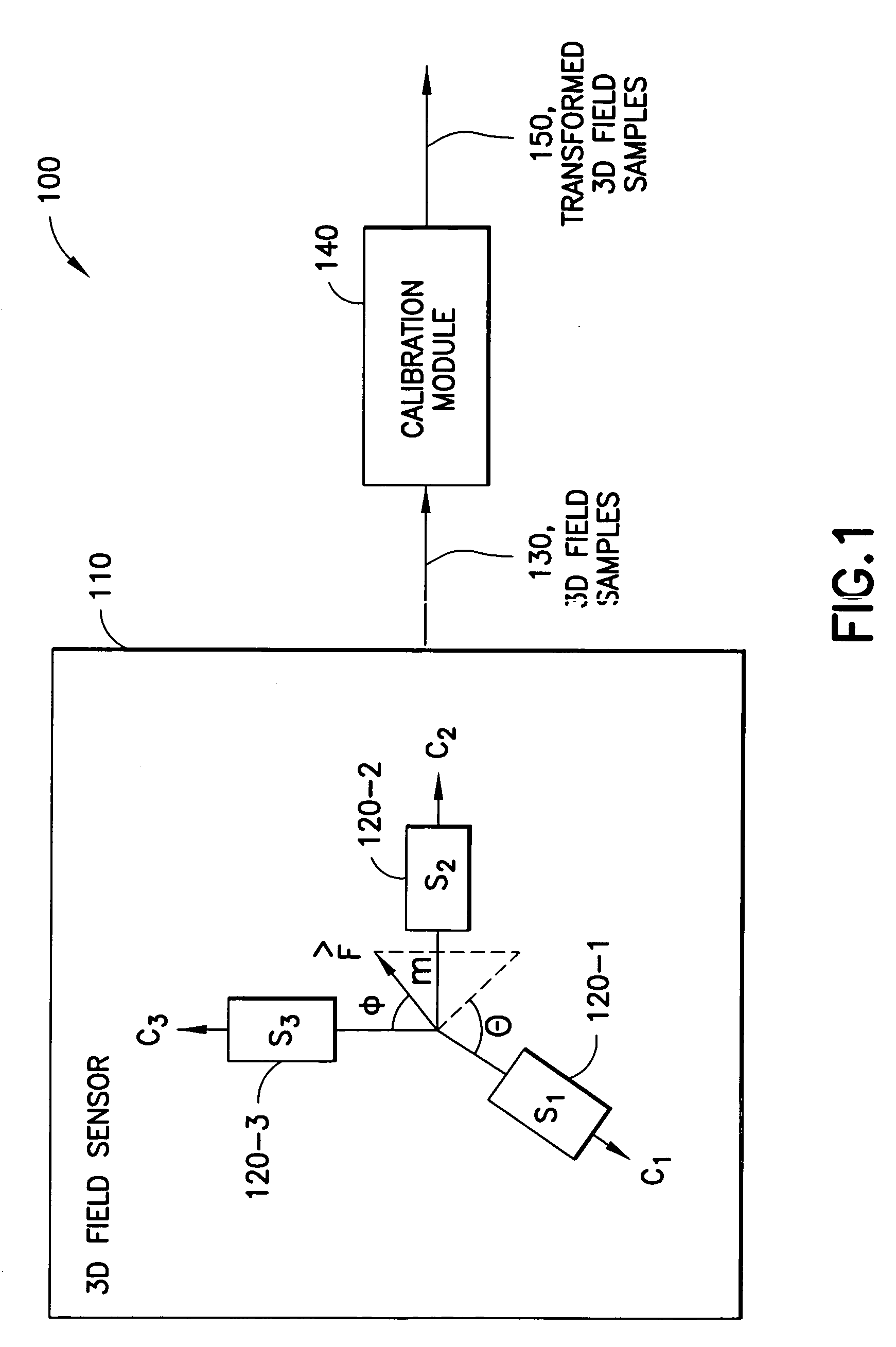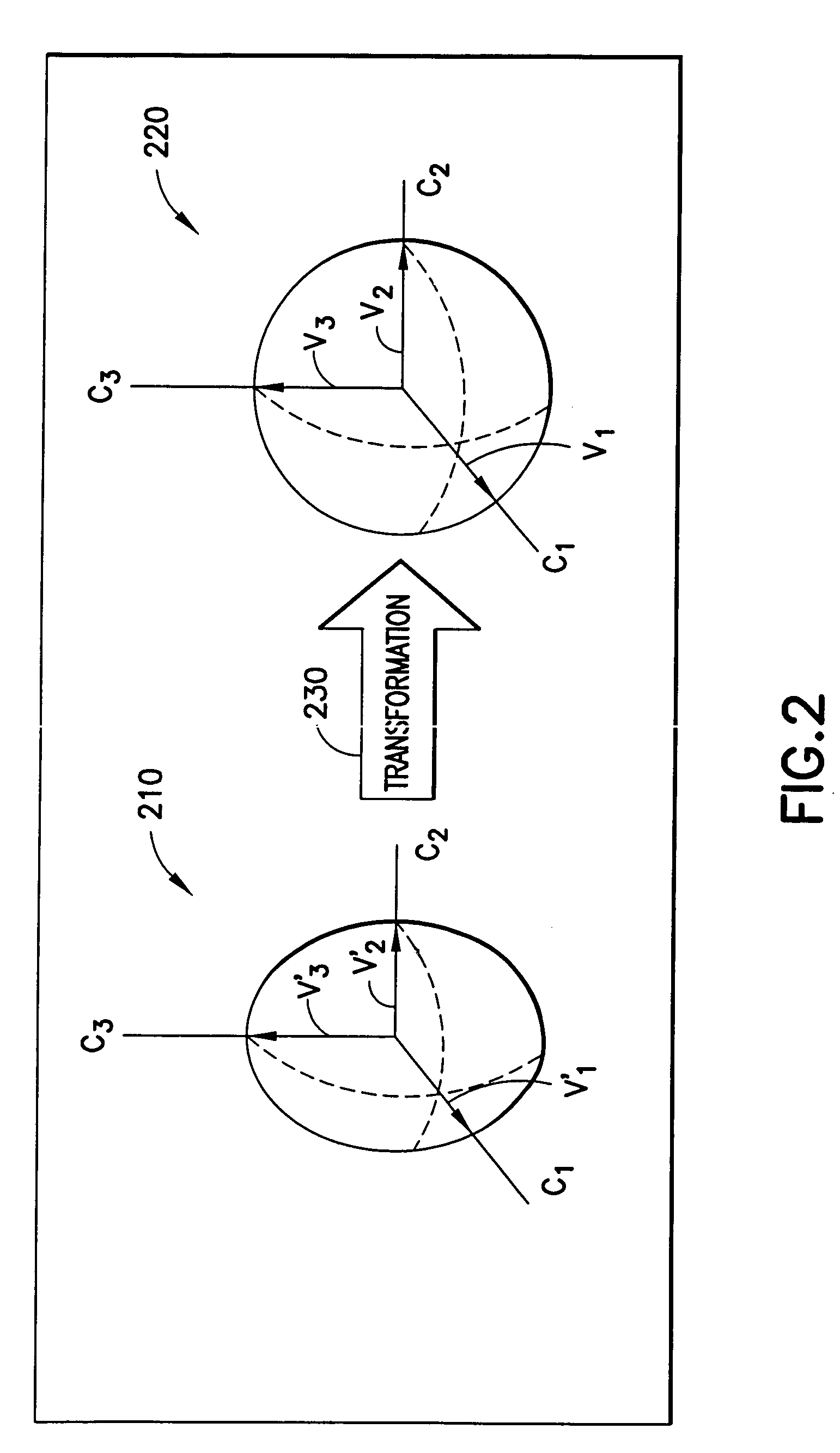Calibration of 3D field sensors
a 3d field sensor and sensor technology, applied in the field of sensors, can solve the problems of difficult magnetometers, long process, and rarely valid assumptions
- Summary
- Abstract
- Description
- Claims
- Application Information
AI Technical Summary
Benefits of technology
Problems solved by technology
Method used
Image
Examples
Embodiment Construction
[0021]For ease of reference, the present disclosure is divided into a number of different sections.
1. Introduction
[0022]The present disclosure is primarily directed to calibrations of 3D field sensors such as three-axis magnetometers (TAM), but in principle the techniques herein can be applied to any three-axis sensor that is used to sense a linear field. Examples of such sensors could be a three-axis accelerometer sensing the earth's gravity or a sensor sensing an electric field in three dimensions.
[0023]Of course, there is any number of straightforward ways of calibrating such a sensor with some kind of reference signal(s). Our setting, however, is different. A TAM can be used in conjunction with a three-axis accelerometer to obtain the orientation of the device in reference to the coordinate system set by the earth's gravitational and magnetic fields. In astronautical sciences, this is usually called the attitude of the spacecraft. We, however, are interested in the orientation o...
PUM
 Login to View More
Login to View More Abstract
Description
Claims
Application Information
 Login to View More
Login to View More - R&D
- Intellectual Property
- Life Sciences
- Materials
- Tech Scout
- Unparalleled Data Quality
- Higher Quality Content
- 60% Fewer Hallucinations
Browse by: Latest US Patents, China's latest patents, Technical Efficacy Thesaurus, Application Domain, Technology Topic, Popular Technical Reports.
© 2025 PatSnap. All rights reserved.Legal|Privacy policy|Modern Slavery Act Transparency Statement|Sitemap|About US| Contact US: help@patsnap.com



